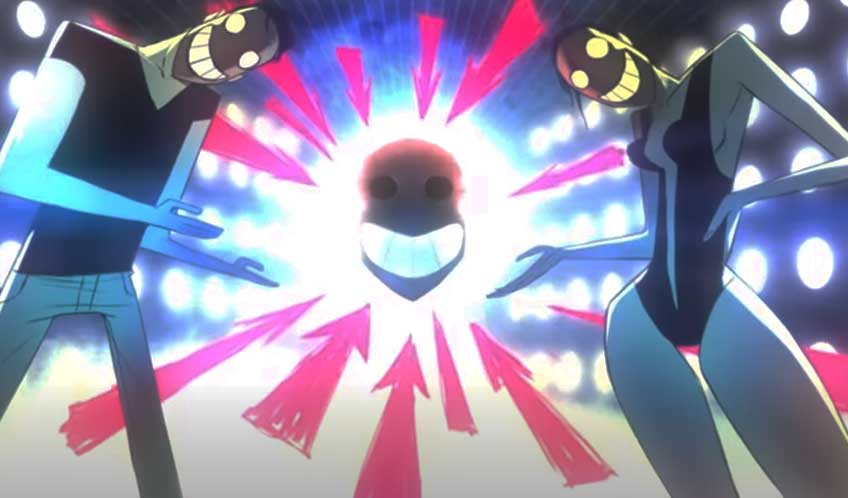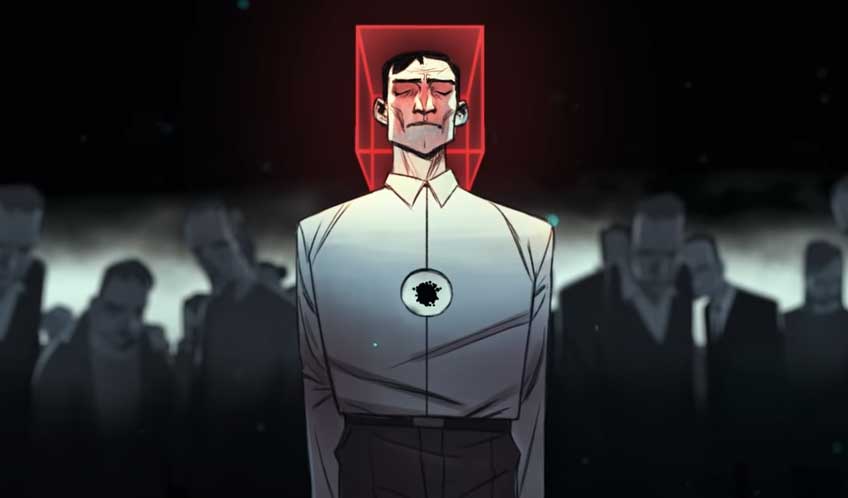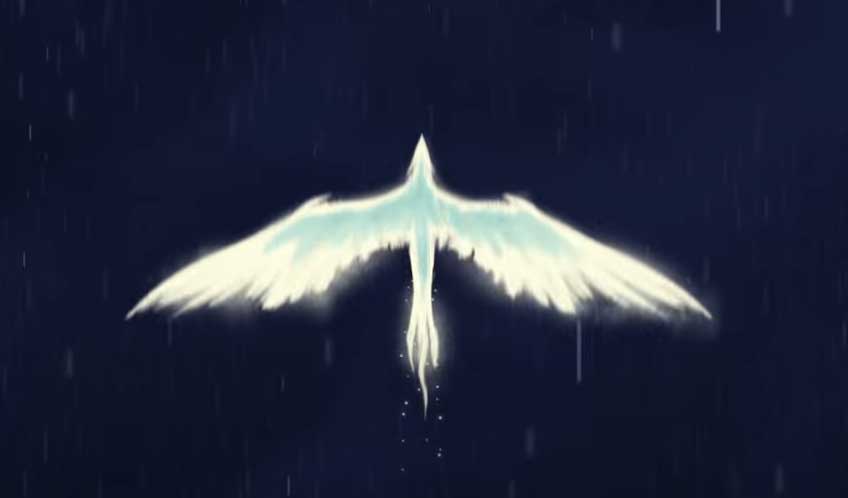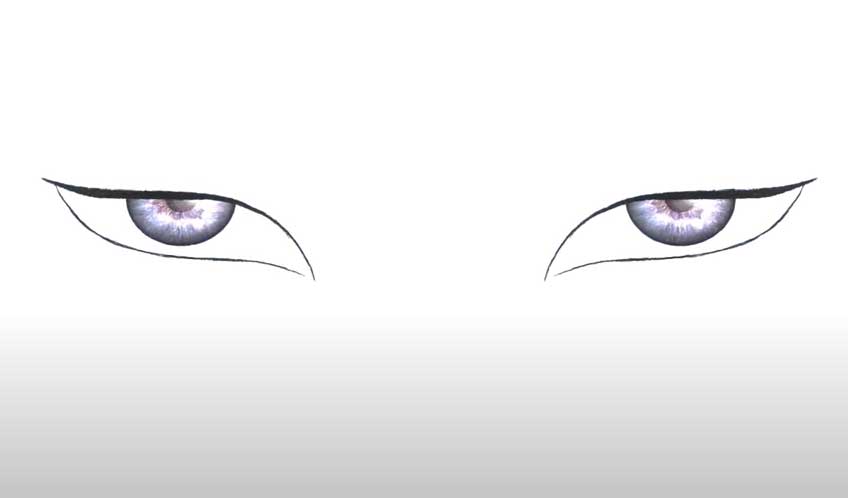In-Shadow: An In-Depth Psychological Analysis
Science fiction in film and literature has become especially significant in dissecting contemporary societies. For instance, H. G. Wells’ The Time Machine (1895) has become a famous science fiction novel that serves as a commentary, through its numerous symbolisms and motifs, on the Industrial Age that was peaking around the time the novella was written. In The Time Machine, Wells envisions a dystopian future that the Time Traveler witnesses, where the Earth’s inhabitants have become degenerates – childlike, mindless, and fearing the darkness.
Similarly, Lubomir Arsov’s short film entitled In-Shadow (2017) strives to uncover the status of the modern age by depicting a reality that is as dark and as dystopic as The Time Machine. In In-Shadow, people from all walks of life are illustrated in such a way that they are dysphoric and depressing caricatures of themselves. As they go about their lives, they are seen with their hearts missing and their faces covered by masks. Various social issues are tackled in the short film, such as the prevalence of mobile use and drugs, the flawed educational system, and the monotony and emptiness that accompany a monotonous white-collar job. As they are all depicted in the foreground, men in suits, conveying power and influence, lurk in the backdrop, appearing to control how the characters in the foreground operate. Towards the end, the end of the world is foreseen, and the truth behind these disturbing motifs is revealed – that there are more powerful forces that are controlling the characters in masks. These masks then begin to fall off, showing people’s real faces in the short film. Finally, in the last still, a haunting pair of eyes lingers until the film rolls to credits.

Chakra Psychology
The symbolic meaning in this short film is readily apparent. The missing hearts seem to allude to chakra psychology. In it, chakras refer to regions of the body that store, transmit, and receive life energy. Together, the state of the seven chakras signifies our wholeness; as they communicate with one another, they bridge the gaps between mind, body, and spirit (Anodea, n.d.). The heart chakra, which is prominently featured as blocked in In-Shadow, refers to us humans as relational beings. At its core, the heart chakra relates to one’s sense of caring and compassion, as well as feelings of love and kindness. If the heart chakra is open to receiving and transmitting energy, then one can give and receive such love and compassion from others (Stoler, 2018). However, in In-Shadow, this chakra appears to be missing or blocked; this suggests that society seems to no longer be readily receptive to love and belongingness in this day and age. Instead, the short film characters suffer from feelings of isolation and emptiness, as depicted by the dark, monochromatic illustrations and their hunched, contained postures.

Another recurring motif in In-Shadow is the mask that each individual in the foreground wears. Within the context of psychology, this may be a reference to the archetypes that are the cornerstone of Carl Jung’s theory of personality called analytical psychology. According to Jung, the psyche (nature) is composed of the conscious, the personal unconscious, and the collective unconscious. The collective unconscious level comprises archetypes, which are archaic images that influence a person’s thoughts, feelings, and behavior (Feist & Feist, 2013). The most striking patterns depicted in In-Shadow are the persona and the shadow, wherein the persona, according to Jung, is the image that we project to others.
The Archetype of Darkness
In contrast, the shadow is the archetype of darkness, representing those characteristics we have that we deny, hide, or do not acknowledge (Feist & Feist, 2013). Thus, In-Shadow calls to the foreground that the majority of modern society is merely a sea of personas. We wear facades to hide our shadow, which broadly encompasses our true feelings of anxiety, depression, and loneliness from living in a world of capitalism and consumerism in the age of technology. However, the short film dares to go beyond one’s shadows by suggesting that people suffer from a sense of powerlessness and a lack of control due to the fixation on possession and materialism, thus rendering our shadows more nuanced than it appears to be. Finally, In-Shadow strives to call on everyone to act and rectify the denial of a collective shadow by depicting a pair of eyes at the end of the film, suggesting that the audience open their eyes and realize their shadow. It is a particularly important message that adheres to Jung’s conception of personality. As Jung asserts, the adult personality is fully and wholly developed once self-realization is achieved. Self-realization in Jungian psychology refers to the process of making wholeness as a person; it is the integration of opposing archetypes – the persona versus the shadow, the anima versus the animus, and so on – to achieve the goal of becoming a homogeneous, harmonious individual (Feist & Feist, 2013). It requires not only the acknowledgment of people’s various archetypes that reside within the psyche but also the efforts to embrace each pattern, even the shadow.
With that said, In-Shadow bears a similar message; if people heal as individuals and as a society, each one needs to recognize their darkness as well as the anxiety-inducing thought that we no longer have a sense of personal agency due to our obsession on material possessions and borderline hedonistic lifestyles.
Alienating Ourselves From Others
Aside from Jungian psychology and the psychology of the chakras, there are other theoretical perspectives in the field of personality psychology that can contribute to the interpretation and analysis of Arsov’s short film. One such theoretical perspective that could be pertinent to the psychological analysis of In-Shadow is Erich Fromm’s humanistic psychoanalysis. His theory of personality rests on the assumption that we, as human beings, have long been separated from the natural world, which has produced feelings of loneliness and isolation. According to Fromm, we suffer from three existential dichotomies: (1) that we live our lives only to find ourselves in death; (2) that we as rational beings are capable of achieving self-realization but are however too restricted by our mortality that we cannot accomplish this goal; and (3) that although we have a need to relate to others, we are ultimately alone (Feist & Feist, 2013). These existential dichotomies are apparent in Arsov’s In-Shadow. For instance, there are several scenes in the short film that depict young adults spending much of their time either using their cell phones or drinking and taking prescription drugs. These scenes echo Fromm’s assumptions by suggesting that while we use our cell phones and drink because we feel the need to connect to people (and because technology, along with alcohol and drug use, is a convenient way to reach out to others), ultimately the way we spend our time alienates us from other people. This becomes a vicious cycle wherein, in order to momentarily relieve us of the anxiety that loneliness produces, we resort to mindless mobile use, alcohol, and drugs.

Moreover, Fromm, in his theory of personality, claims that as a way of relating to other people and things that surround us, we can more or less categorize ourselves into different character orientations. According to Fromm, there are four nonproductive character orientations: (1) the receptive character, (2) the exploitative character, (3) the hoarding character, and (4) the marketing character (Feist & Feist, 2013). Although each of these character orientations is portrayed in In-Shadow, none is featured as prominently as the marketing orientation. According to the theory of humanistic psychoanalysis, the marketing orientation is a byproduct of modern commerce, in which businesses have become impersonal. Those individuals with a marketing orientation perceive themselves as commodities, with their self-worth heavily hinged on their ability to “sell” themselves (Feist & Feist, 2013). The marketing character is evident in the characters portrayed in In-Shadow, as they go about their 9-to-5 jobs and resort to prescription drugs to temporarily fix themselves. The marketing character, while it can be lauded for its adaptability, is also opportunistic, aimless, and wasteful (Feist & Feist, 2013). This character orientation is mirrored in the short film, particularly its overarching characteristics of opportunism and aimlessness. The employees and students are conveyed in the film to be controlled by larger external forces, and they are thus dictated by these forces to live a life that is ultimately flawed, meaningless, and eventually alienated from the natural world. According to Fromm, these nonproductive character orientations can be balanced by the sole productive orientation: the biophilic character. Biophilic characters are those who work, love, and reason healthily and adaptively as a means of relating to other people and the natural world. This character orientation was suggested toward the end of In-Shadow, albeit at the end of the world. In-Shadow’s ending highlights the fact that if we do not realize the sobering reality of today’s society and culture, it may be too late to heal ourselves from the wounds that loneliness, greed, and selfishness inflict.
Arsov’s In-Shadow thus serves as a wake-up call to everyone deeply embedded in the mechanisms of a capitalist, materialist age. Psychologically speaking, it is a pressing need that we search our hearts once more in order to reconnect with the world and the people that surround us. Furthermore, we may also find ourselves once again if we assume a more biophilic character orientation. While we do not have to fully abandon our other character orientations, we must strike a balance between those and a loving character orientation. This way, we will be able to heal from our hidden feelings of emptiness and isolation and achieve self-realization as individuals and as a society.

References
Anodea, J., n.d.. The Psychology of the Chakras. [Online] Available at: https://kripalu.org/resources/psychology-chakras [Accessed 11 July 2020].
Feist, J. & Feist, G., 2013. Theories of Personality. 8th ed. New York: McGraw-Hill.
Stoler, D. R., 2018. Maslow’s Hierachy vs. 7 Chakras- Interestingly Similar!. [Online]
Available at: https://www.psychologytoday.com/us/blog/ the-resilient-brain/201804/
maslows-hierachy-vs-7-chakras-interestingly-similar [Accessed 11 July 2020].
Ron is a neuropsychiatry intern finishing his Doctorate of Medicine. He has been in the scientific industry for nearly 10 years and specializes in curating evidence-based neuropsychiatry content. As of today, he is also teaching neuroscience to incoming doctors.
Learn to Lucid Dream and Gain Rewards
![]()
Learn to lucid dream and complete tasks for re-life rewards.



Recent Comments